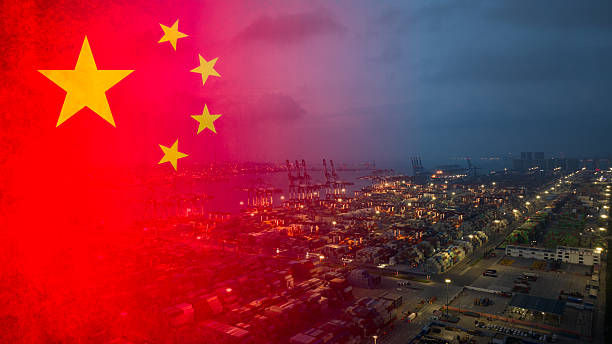From Logistics to Security: The Strategic Conversion of BRI Assets in the Indo-Pacific
- Gabriele Iuvinale

- 30 set
- Tempo di lettura: 3 min
The Belt and Road Initiative (BRI) is not a random collection of projects, but the backbone of the People's Republic of China's (PRC) strategy to expand its security and influence globally.This strategy is based on fundamental operational ideas, including:
The Idea of Calculated Risk. China must precisely measure the geopolitical and operational risk in every partner country, using a scientific model to decide where to invest and how to protect its interests.
The Idea of Dual-Use Power Bases. The economic hubs created, particularly the China Overseas Industrial Parks (COIP) and related infrastructure, are the strategic response to risk, serving as platforms for both economic expansion and security projection.
This deep integration of risk measurement and strategic asset creation generates a complex and lasting model of influence in the Indo-Pacific.

Risk Assessment: The Map of China's Strategic Priorities
China assesses risk on three levels, utilizing a rigorous model that combines the host country's internal vulnerability, the external competition among great powers, and China's own risk resilience. This analysis guides security and resource allocation across 18 countries in the region.
High-Risk Areas: Where Competition Dominates
The highest risks are concentrated where great power competition is intense or where vulnerability is extreme.
Philippines and India: Risk is high due to strong rival power influence. In the Philippines, the high great power game factor means China's rivals (U.S., Japan, Australia) have a significantly higher geo-potential. In India, the risk is aggravated by China's low resilience (risk resilience is generally below 0.45) in managing crises with a major regional rival.
Afghanistan: Classified as a High-Risk area, the danger is driven primarily by extreme internal vulnerability. Its stability is crucial for the security of Xinjiang and the China-Pakistan Economic Corridor (CEPC).
Medium-High Risk Areas: Where Local Stability is Needed
In countries like Pakistan and Myanmar, the risk is Medium-High, but the focus shifts to internal factors.
China holds a geopolitical advantage (low factor). However, the primary danger is the internal weakness of these allies (political turmoil, terrorism), which directly threatens vital projects like the CEPC.
Power Bases: The Dual-Use Architecture as a Risk Solution
The China Overseas Industrial Parks (COIP) and their related infrastructure are the strategic answer to risk, aimed at achieving "High Connectivity, High Supply, and High Level" development.
High Connectivity: Dual-Use Logistics and Security Projection
The "High Connectivity" goal aims to build resilient, interconnected infrastructure.
Dual-Use Infrastructure: Deep-water ports (e.g., Gwadar and Kyaukpyu) and railways (e.g., the China-Laos Railway) are de facto dual-use assets (civilian and potential military).
Naval Projection: These advanced logistical hubs provide the necessary platform for the PLA Navy (PLAN) to extend its reach and operational supply into the Indian Ocean, bypassing strategic choke points like the Strait of Malacca.
High Supply and High Level: Economic Control and Standards
The "High Supply" and "High Level" goals ensure Chinese economic dominance.
Supply Chain Integration: The aim is to integrate global supply chains and transfer Chinese production capacity abroad. This ensures that even countries facing high external competition remain linked to the Chinese production ecosystem.
Standard Setting: The focus on digital innovation and professional management ensures the diffusion of Chinese operational and technological standards, making the local environment compatible with Chinese interests.
Associated Risks: Security and Sovereignty of Host States
The required security projection to protect China's strategic interests (the doctrine of "overseas interest protection") introduces military risks and sovereignty concerns for host states.
Risk of Sovereignty Erosion (Security Creep)
China uses subtle measures to defend its assets against internal threats in areas of high vulnerability.
Chinese Private Security Companies (PSCs): The protection and surveillance of critical sites (COIPs, corridors) in high-risk nations are often handled by Chinese PSCs, frequently staffed by ex-PLA personnel. These forces operate autonomously, creating security enclaves under Chinese control that limit the full jurisdiction and monopoly of force of the host state.
PLA Intervention Potential: The dual-use infrastructure provides the necessary advanced logistical platform for deploying PLA quick-reaction forces (even if non-permanently) for personnel evacuation or asset defense in acute crises.
Risk of External Military Targeting
The dual-use nature of China's power bases exposes host states to major power conflict dynamics.
Military Targets: Ports and logistical hubs critical for Chinese projection (e.g., Gwadar, Kyaukpyu) automatically become primary military targets for China's adversaries (U.S., India) in the event of a crisis. The host country risks becoming involved in a geostrategic conflict that is not its own.
Technological Dependency: The reliance on Chinese "High Level" standards, especially in digital surveillance and communication, creates a technological dependency that can be leveraged by Beijing for intelligence or control purposes.




Commenti